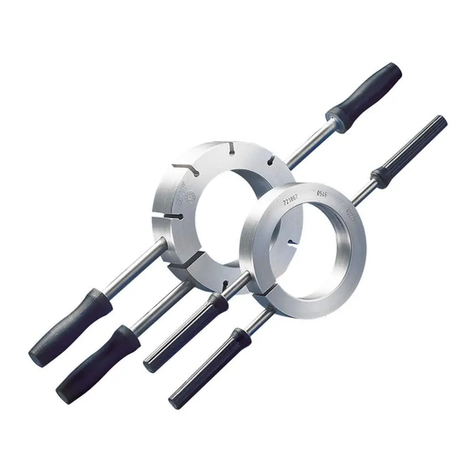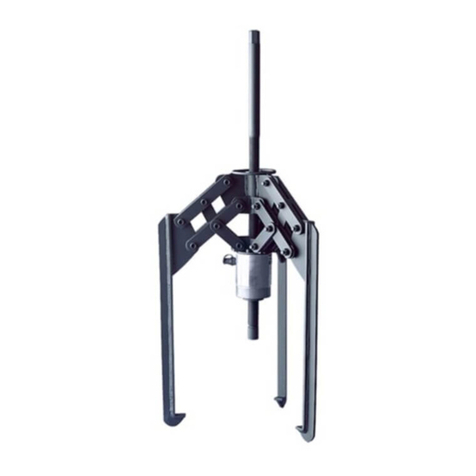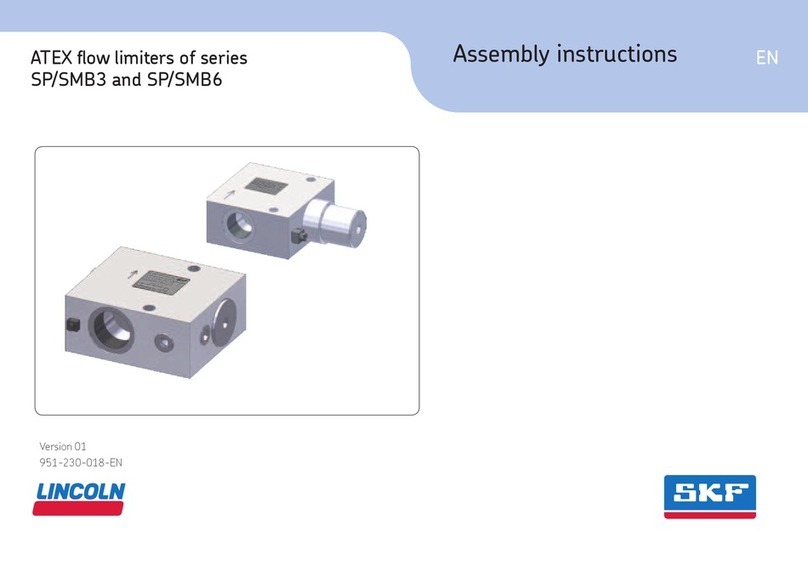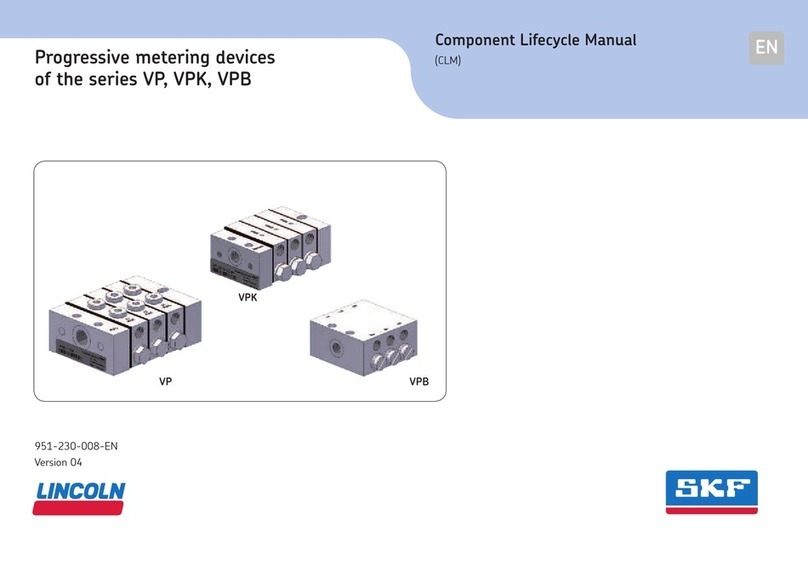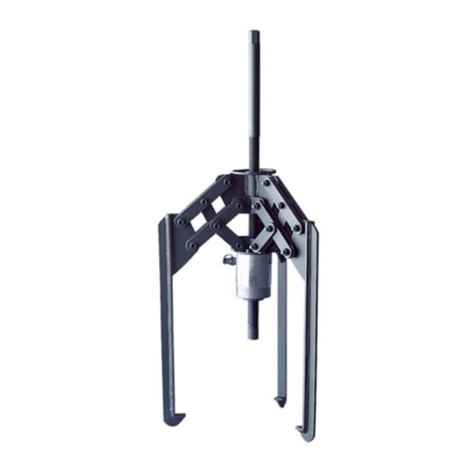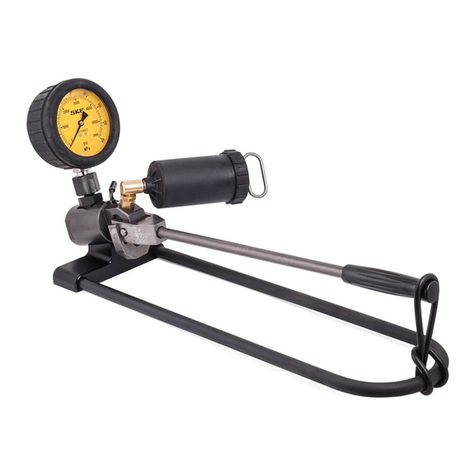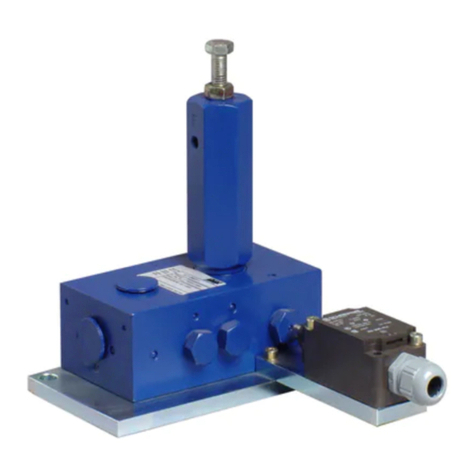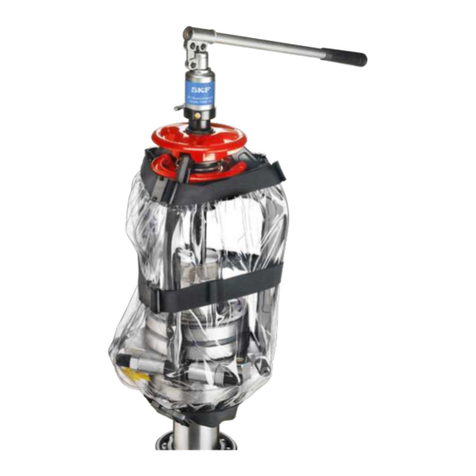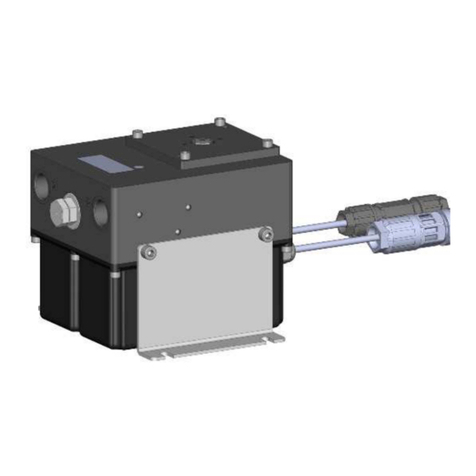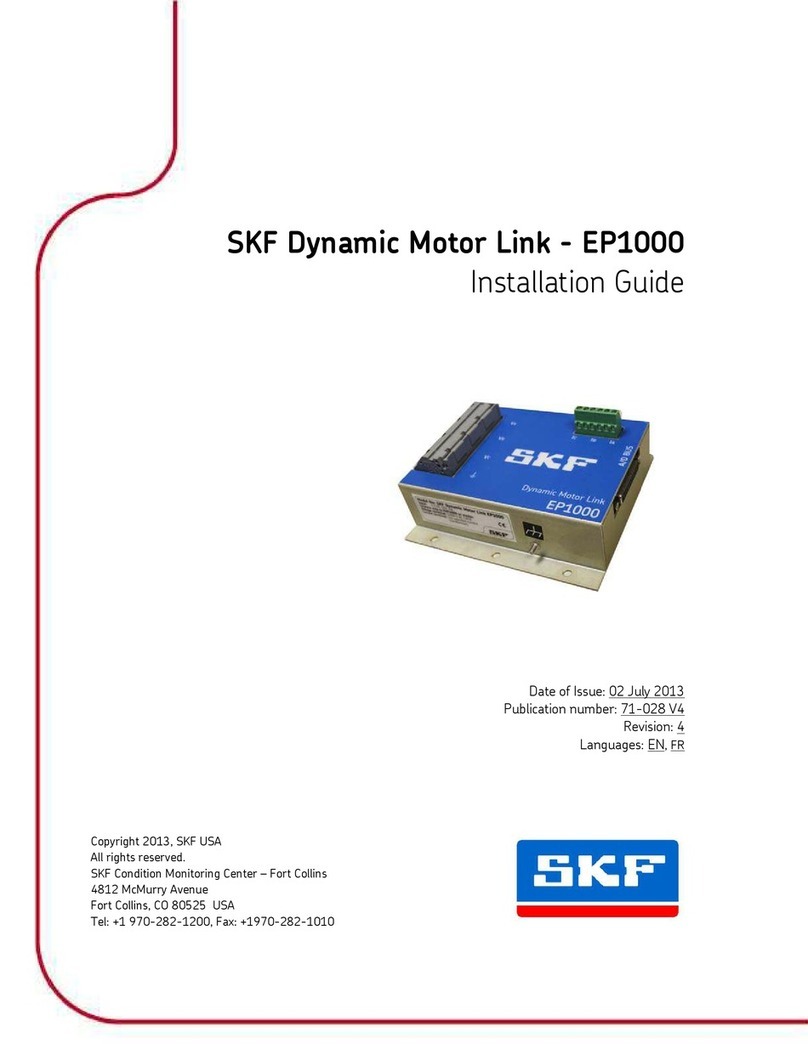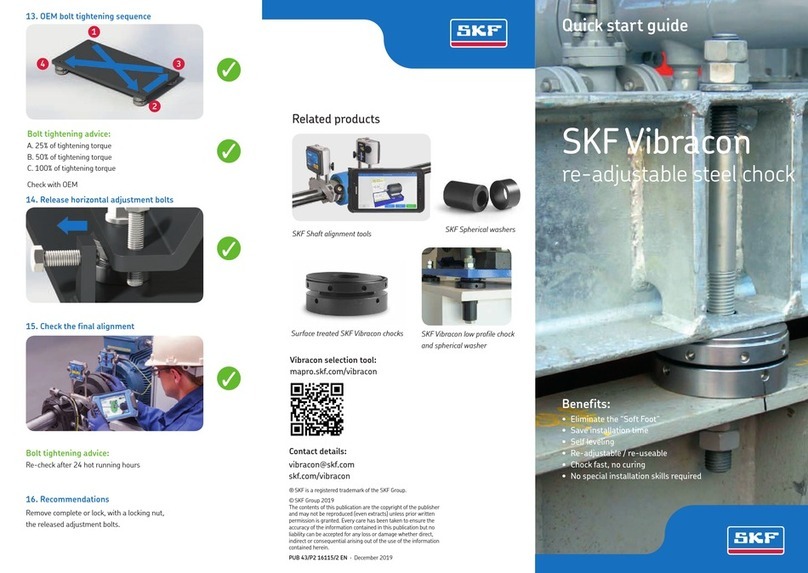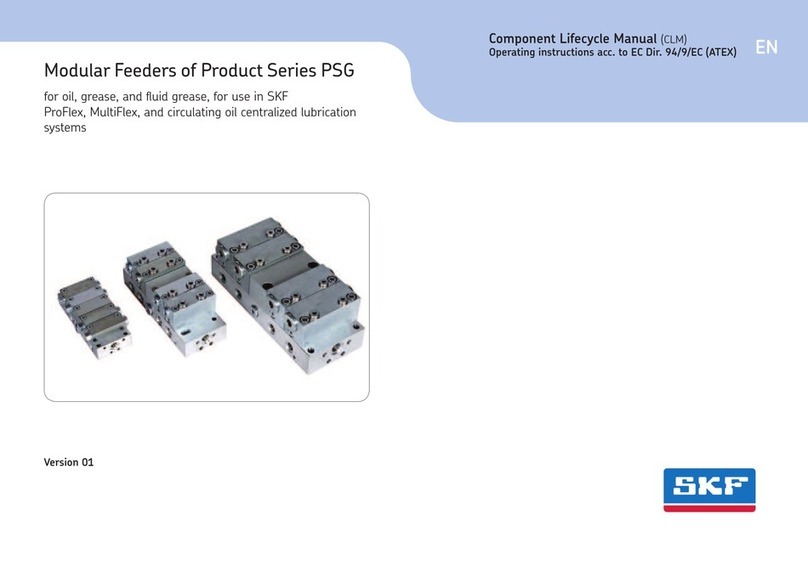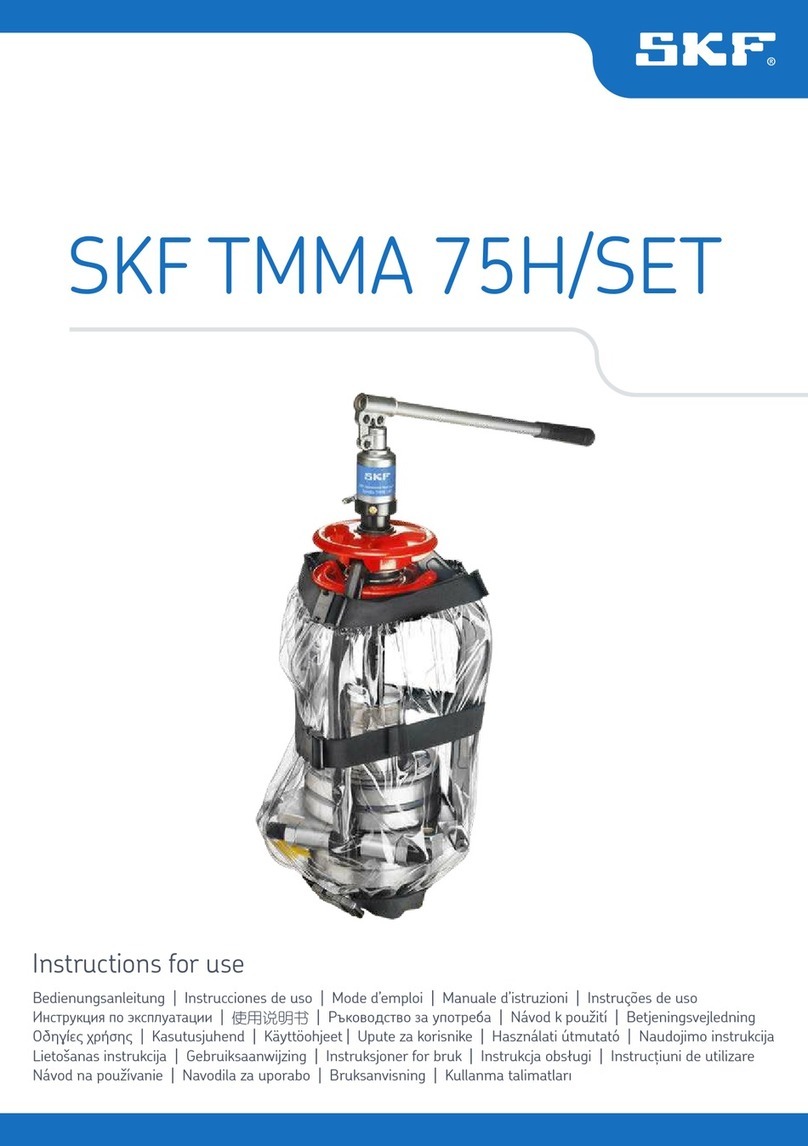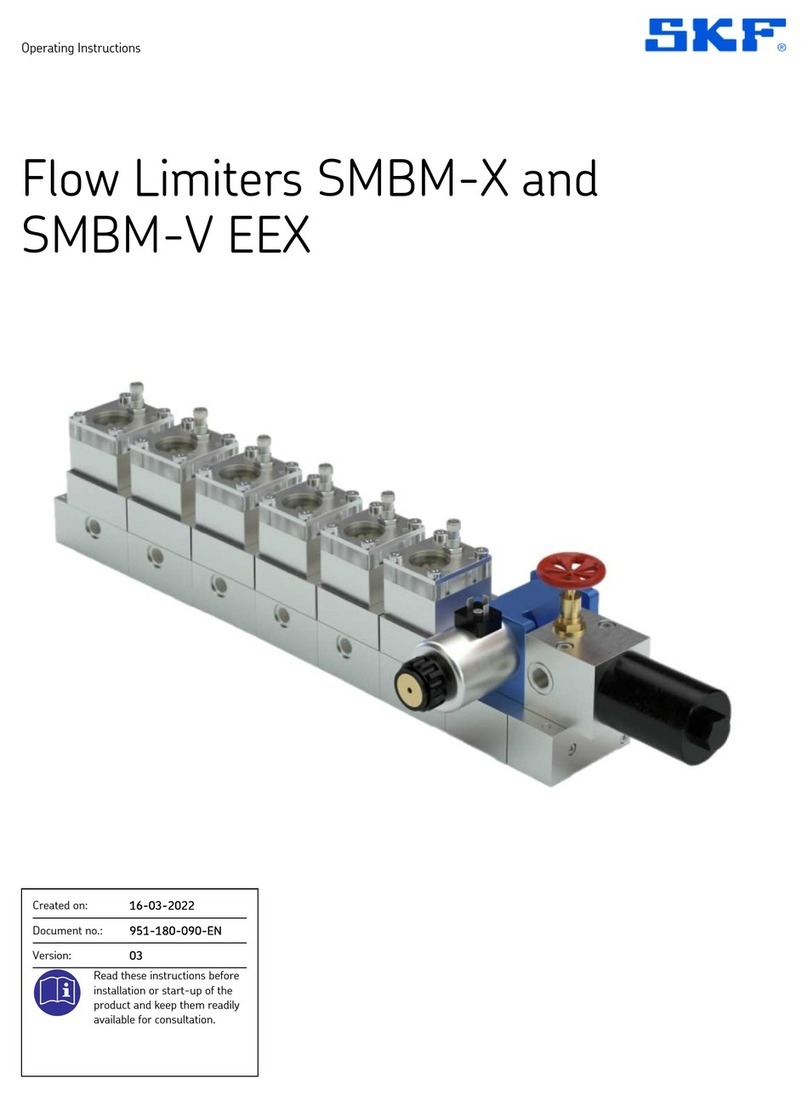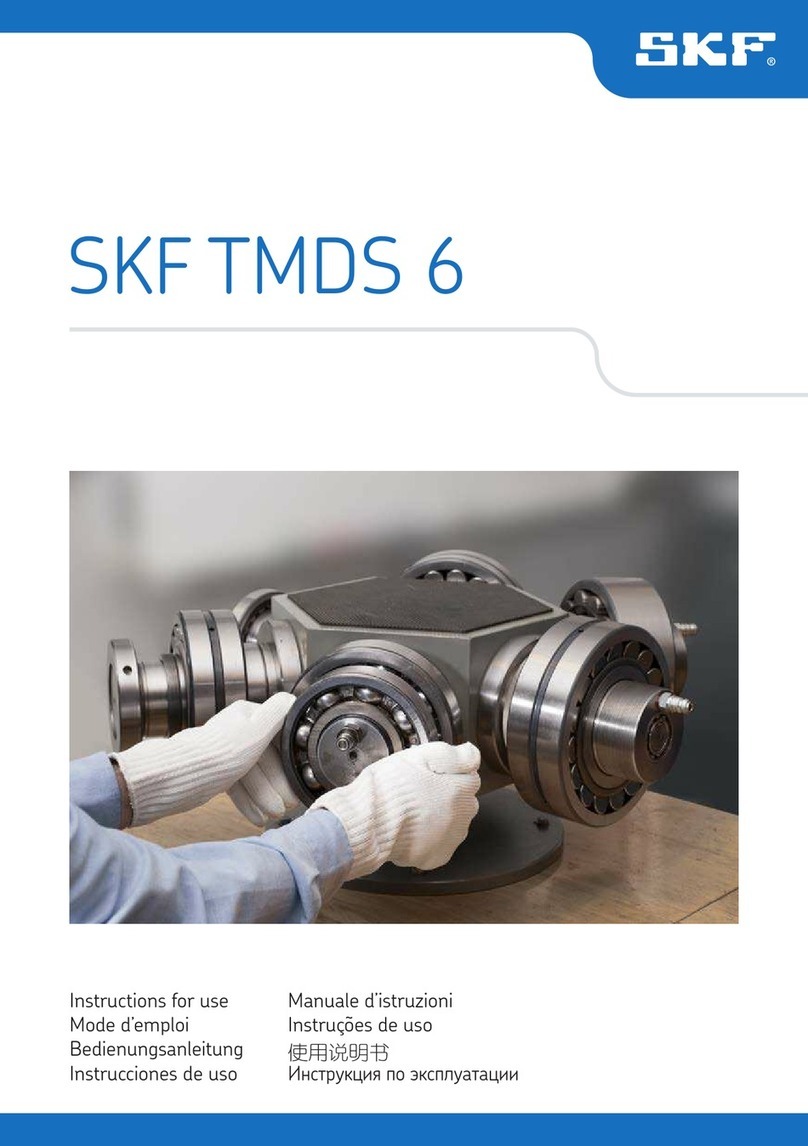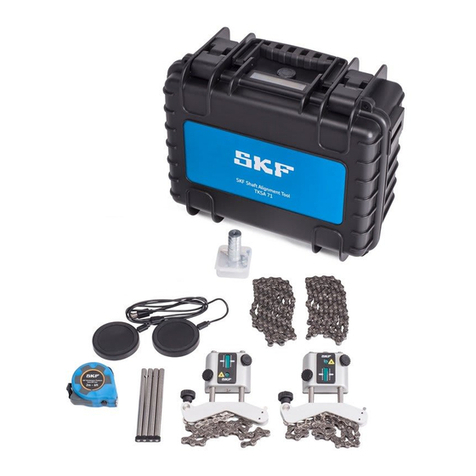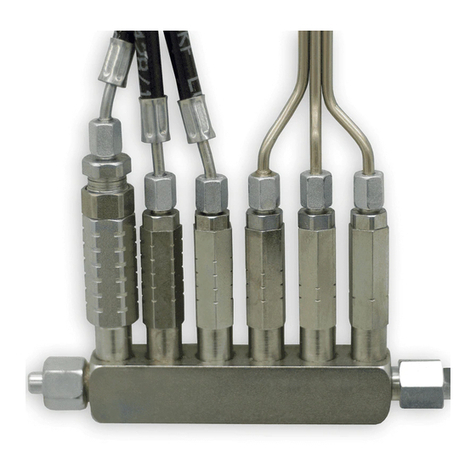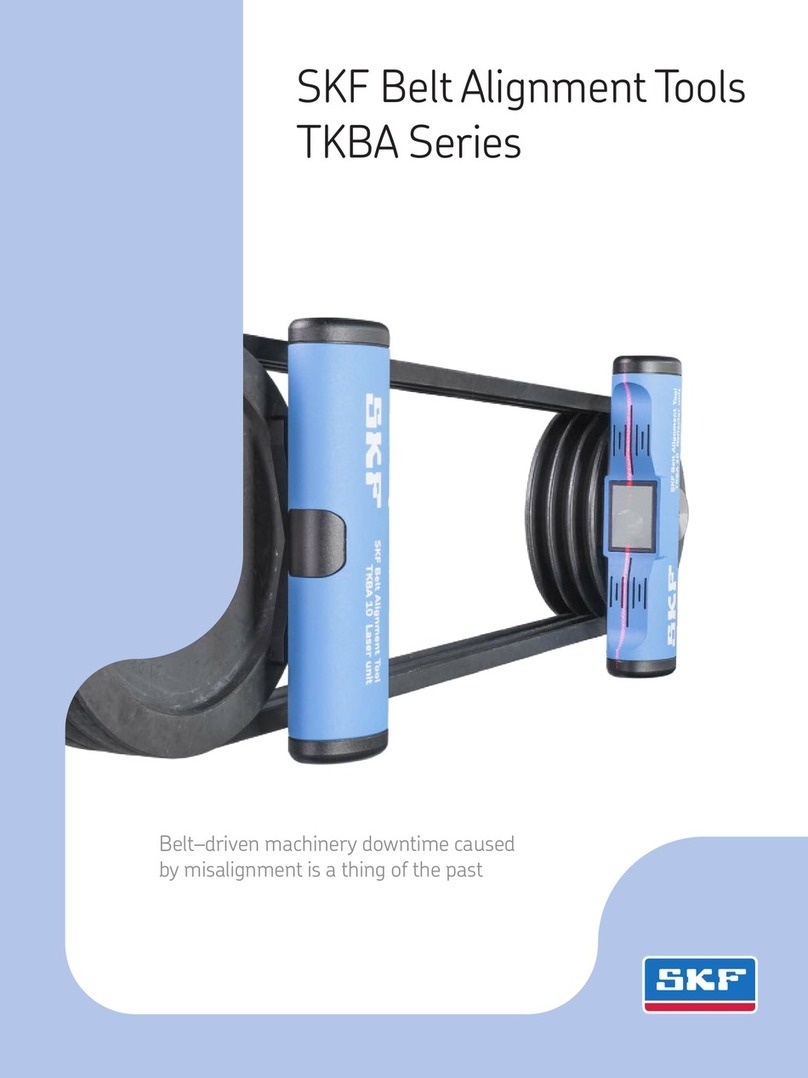
WARNING
Always read and follow the fluid and
solvent manufacturer’s recommenda-
tions regarding the use of protective
clothing and equipment.
WARNING
To reduce the risk of serious bodily
injury or property damage.
Never exceed the maximum air or fluid
working pressure of the lowest rated
system component.
WARNING
Always check equipment for proper
operation before each use, making sure
safety devices are in place and operating
properly. Do not alter or modify any
part of the equipment as this may
cause a malfunction and result in seri-
ous bodily injury.
WARNING
Do not exceed the stated maximum
working pressure of the elector or of the
lowest rated component in your system.
Do not alter or modify any part of this
equipment.
Do not operate this equipment with
combustible gas.
Do not attempt to repair or disassem-
ble the equipment while the system is
pressurized.
Tighten all fluid connections securely
before using this equipment.
Always read and follow the fluid man-
ufacturer’s recommendations regarding
fluid compatibility, and the use of pro-
tective clothing and equipment.
Check all equipment regularly and
repair or replace worn or damaged
parts immediately.
Failure to heed these warnings
including misuse, over pressurizing,
modifying parts, using incompatible
chemicals and fluids, or using worn or
damaged parts, may result in equip-
ment damage and/or serious personal
injury, fire, explosion, or property
damage.
Owner/operator
manual
It is the responsibility of the Owner/Operator
to properly use and maintain this equipment.
The Instructions and Warnings contained
in this manual shall be read and understood
by the Owner/Operator prior to operating
this equipment.
It is the responsibility of the Owner/Oper-
ator to maintain the legibility of all Warning
and Instruction labels.
The Owner/Operator shall retain this
manual for future reference to important
Warnings. Operating and Maintenance
Instructions.
Model 85250: Used with EPDM compatible
materials.
Model 85252: Used specifically with
petroleum based materials.
Before connecting
ejector to air line
Airline lubrication is necessary for the proper
performance and life of this ejector Be sure
that the proper airline filter. lubricator and
regulator can supply the volume of air neces-
sary to operate the ejector at the speed
required.
Operating
precautions
Use Lincoln replacement parts to assure
compatible pressure rating. ©Ejector
requires a -way air valve with /NPT ports
detented to the retract position when
de-enegergized.
Do not operate ejector in excess of rec-
ommended pressure range.
Operation
Model ejector incorporates an in-line
double power air cylinder which produces a
: ratio during the dispense cycle. This is
achieved through special porting through
the upper piston rod which allows air to flow
and pressurize the top sides of the pistons.
When the ejector is pressurized to dis-
pense material, air should also be vented
from the bottom of the lower piston. The
bottom of the upper piston is never pressur-
ized because of a small hole in the upper
cylinder wall which exposes it to ambient
pressure. As the ejector continues its dis-
pense stroke, it’s travel is limited by the
adjustment screw.
When the ejector is retracted, air is vented
from the tops of the two cylinders and pres-
sure builds under the lower piston. When the
ejector is fully retracted, pressurized mate-
rial enters the material inlet and refills the
void of the pumping chamber just in front of
the plunger.
The ejector is now ready for another dis-
pense stroke.
NOTE
A in length of /in I.D. hose must be
used at the material inlet to prevent
hydraulic lock which may occur if rigid
piping is used.
